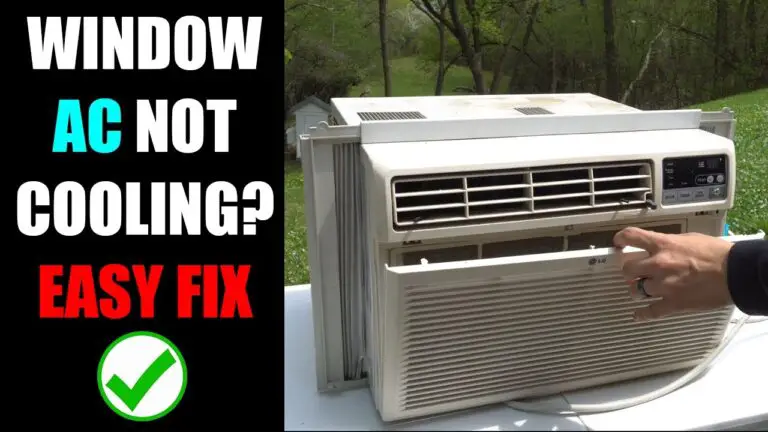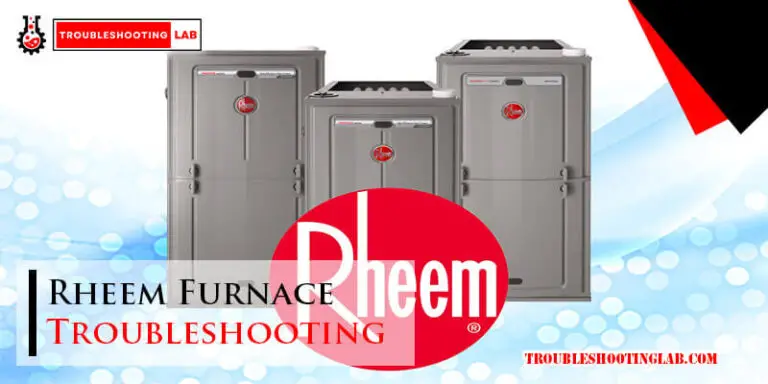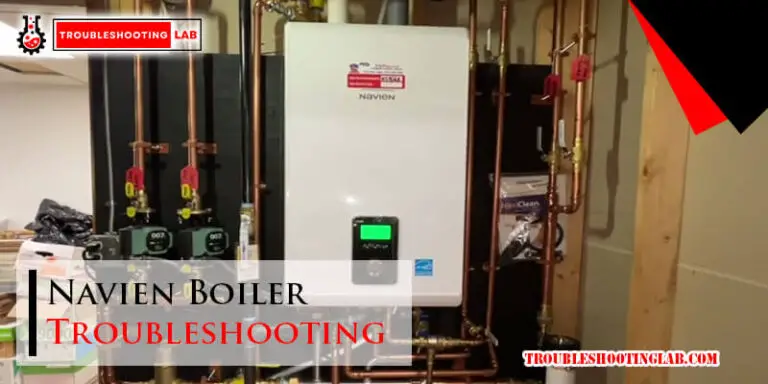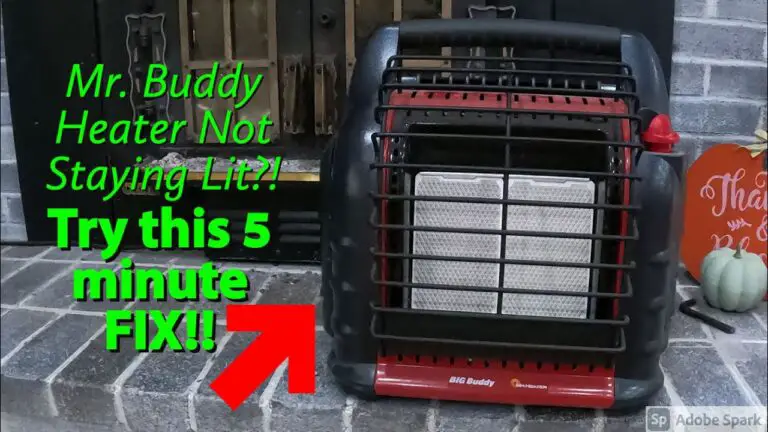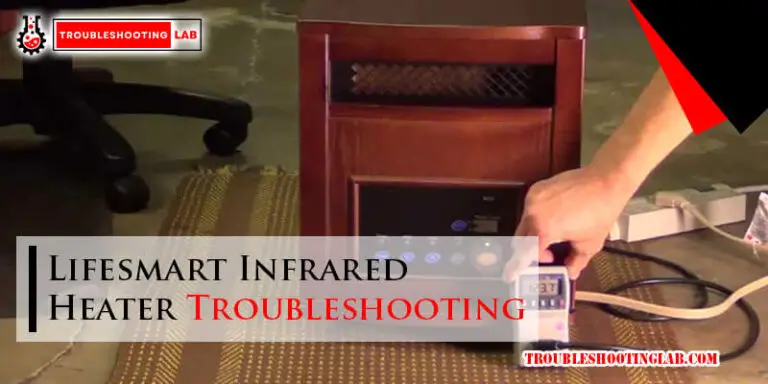Senville Mini Split Troubleshooting: Expert Tips & Solutions
Is your Senville mini split giving you trouble? Don’t worry—you’re not alone.
When your system isn’t cooling, heating, or operating like it should, it can be frustrating and even stressful. But here’s the good news: most issues can be fixed without calling in a technician. By understanding some common problems and solutions, you can save time, money, and avoid unnecessary headaches.
In this guide, we’ll walk you through simple troubleshooting tips to get your Senville mini split back to working perfectly. Whether it’s unusual noises, error codes, or temperature inconsistencies, we’ve got you covered. Stick around, and by the end, you’ll feel confident diagnosing and resolving common issues on your own. Let’s get started!
Common Mini Split Issues
Senville mini split systems are reliable, but issues can occur. Understanding common problems helps maintain your unit’s performance. Early troubleshooting can prevent costly repairs.
Below are some typical problems and how to address them.
Unit Not Turning On
If the mini split won’t start, check the power source first. Ensure the unit is properly plugged in and the circuit breaker is on. A tripped breaker or blown fuse may need replacement. Examine the remote’s batteries and replace them if weak. Clean the remote’s sensor and aim it directly at the unit.
If the issue persists, inspect the thermostat settings. Ensure the temperature is set correctly for cooling or heating. If all else fails, consult the user manual for reset instructions.
Insufficient Cooling Or Heating
Low cooling or heating often points to airflow problems. Check if the air filters are dirty or clogged. Clean or replace them to restore efficiency. Verify that the outdoor unit isn’t blocked by debris or vegetation. Clear any obstructions to allow proper airflow.
Ensure the refrigerant levels are adequate. Low refrigerant may need professional attention. Incorrect thermostat settings can also cause this issue, so adjust accordingly.
Unusual Noises During Operation
Strange noises can indicate loose parts or internal damage. Rattling sounds may mean screws or panels are loose. Tighten them carefully to stop the noise. A grinding sound could suggest motor or fan issues. Turn off the unit and contact a technician to avoid further damage.
Whistling noises often come from clogged filters or ducts. Cleaning these parts can resolve the problem.
Water Leaks From The Unit
Water leaks can occur if the drain line is clogged. Locate the drain line and clear any blockages with a vacuum or brush. Ensure the unit is level to prevent water from pooling inside. Frozen coils could also cause leaks. Check for ice buildup and let the unit thaw naturally.
If leaks persist, inspect the condensate pump and replace it if faulty. Persistent water issues may need professional servicing.
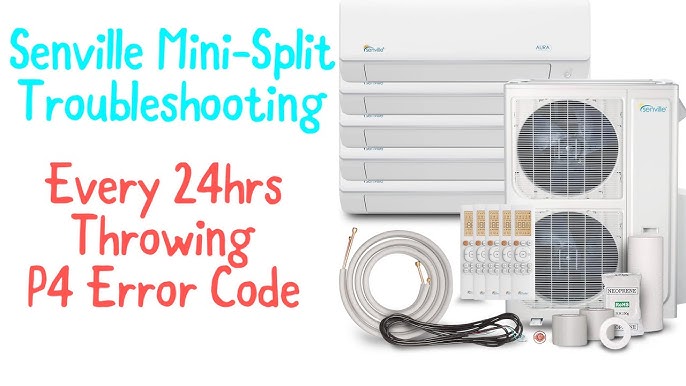
Credit: www.youtube.com
Checking Power Supply
A reliable power supply is essential for your Senville mini split to function. If your system isn’t working, checking the power supply is the first step. Power interruptions or electrical issues can prevent the unit from operating properly. By inspecting key components, you can identify and fix common problems.
Inspecting Circuit Breakers
Start by inspecting the circuit breaker that powers your mini split. Look for a tripped breaker in your electrical panel. If the breaker is off, switch it back to the “on” position. If it trips again, this could indicate an electrical overload or short circuit. Seek assistance from a certified electrician if the issue persists.
Testing Electrical Connections
Loose or damaged connections can cause power issues. Inspect the wiring between the outdoor and indoor units. Look for signs of wear or damage, like frayed wires or burnt marks. Ensure all connections are secure. Use a multimeter to check for proper voltage. If voltage is inconsistent, consult a professional.
Verifying Remote Control Functionality
A faulty remote can also disrupt power control. Check the batteries and replace them if necessary. Ensure the remote is aimed directly at the indoor unit. Clean the remote’s sensor with a soft cloth to remove dust or dirt. If the remote still doesn’t work, try resetting it. Refer to your user manual for reset instructions.
Airflow Problems
Airflow problems in your Senville mini split can seriously impact its performance. If your unit isn’t blowing enough air, or if the air feels weaker than usual, it’s time to take action. Don’t worry—most airflow issues can be resolved with a few simple troubleshooting steps.
Cleaning Air Filters
Dirty air filters are one of the most common reasons for weak airflow. Over time, dust and debris build up on the filters, blocking the air from passing through effectively. Make it a habit to clean your filters every month, especially during seasons when your mini split works overtime.
To clean the filters, turn off your unit and carefully remove them. Use a soft brush or rinse them under lukewarm water to remove dirt. Let them dry completely before putting them back in the unit—it’s a small task that makes a big difference.
Inspecting Air Vents
Air vents can sometimes get blocked by furniture, curtains, or even household clutter. This disrupts the flow of air and forces your mini split to work harder than it should. Take a quick walk around the room and check if anything is obstructing the vents.
Keep at least a foot of space around the vents clear for optimal airflow. If you’ve recently rearranged your furniture, double-check that nothing is blocking the air from circulating properly.
Addressing Obstructed Outdoor Units
Don’t overlook the outdoor unit—it’s just as important as the indoor part of your mini split. Leaves, dirt, and even snow can block the outdoor unit’s airflow, reducing the system’s efficiency. Regularly inspect the unit to ensure it’s free from debris.
Clear away any leaves, branches, or other objects that might be obstructing the unit. If you live in an area with heavy snowfall, consider installing a cover or clearing snow after a storm. A clear outdoor unit keeps your mini split running smoothly year-round.
Does your mini split still have airflow issues despite these steps? It might be time to call a professional technician. But before doing that, these quick fixes often resolve most problems without breaking a sweat.
Refrigerant-related Issues
Refrigerant-related issues in your Senville mini split system can lead to inefficient cooling, higher energy bills, or even complete system failure. If your unit isn’t cooling as it should, refrigerant problems might be the culprit. Understanding these issues can help you take the right steps before they escalate into costly repairs.
Identifying Refrigerant Leaks
Refrigerant leaks are one of the most common issues in mini split systems. You might notice a drop in cooling performance, hissing sounds from the unit, or even ice forming on the coils. These are signs that refrigerant might be escaping, and they need immediate attention.
Check the area around your indoor and outdoor units for any oily residue. Leaking refrigerant often leaves behind a greasy film. If you spot this or suspect a leak, avoid trying to fix it yourself—it requires specialized tools and expertise.
Checking Refrigerant Levels
Low refrigerant levels can make your mini split work harder, shortening its lifespan. If your system struggles to maintain a consistent temperature or cycles on and off frequently, it might be low on refrigerant.
Use a pressure gauge to check the refrigerant levels if you’re comfortable with basic HVAC tools. However, keep in mind that Senville systems are sealed units. A drop in refrigerant usually signals a leak, which needs to be resolved before adding more.
Contacting A Professional For Refilling
Refilling refrigerant isn’t a DIY task. It requires specific refrigerants, like R-410A, and precise measurements to avoid overfilling or underfilling the system. Incorrect handling can damage your unit and void the warranty.
Call a licensed HVAC technician for assistance. They can safely refill the refrigerant and fix any underlying issues, such as sealing leaks. It’s a small investment compared to the long-term cost of a damaged system.
Have you ever delayed fixing a refrigerant problem, only to face a bigger issue later? Don’t let that happen with your Senville mini split. Addressing refrigerant-related concerns early can save you time, money, and stress down the line.
Sensor And Thermostat Troubles
Issues with temperature sensors and thermostats can disrupt your Senville mini split system’s performance. These components play a crucial role in maintaining the desired indoor temperature. Faulty sensors or a miscalibrated thermostat may lead to uneven cooling or heating. Understanding how to test, recalibrate, or replace these parts can restore your system’s functionality.
Testing Temperature Sensors
Temperature sensors help measure indoor and outdoor conditions. To test a sensor, first turn off the power to your unit. Locate the sensor, which is usually near the evaporator coil. Use a multimeter to check its resistance. Compare the reading with the manufacturer’s specifications. A sensor with incorrect resistance might need replacement.
Recalibrating The Thermostat
A miscalibrated thermostat can cause inaccurate temperature settings. To recalibrate, access the thermostat’s settings menu. Follow the user manual to adjust the temperature reading. Make small changes and test the system afterward. Ensure the thermostat matches the actual room temperature.
Replacing Faulty Components
Damaged sensors or thermostats can hinder system efficiency. If testing reveals a faulty component, purchase a compatible replacement. Refer to your Senville manual for part numbers and installation guides. Replace the component carefully, reconnect wires, and restore power to the unit.
Unusual Noises Diagnosis
Strange noises from your Senville mini split system can be concerning. These sounds often signal an issue that needs attention. Diagnosing the source of the noise can help maintain the unit’s efficiency. Ignoring unusual sounds may lead to costly repairs or system failure. Let’s explore common causes and how to address them effectively.
Loose Components Check
Start by inspecting for loose screws or panels on the unit. Vibrations during operation can loosen these parts over time. Tighten screws and secure any loose panels to reduce rattling sounds. Examine brackets and mounts to ensure they are firmly in place. Loose components can create persistent buzzing or knocking noises.
Fan Blade Inspection
Check the fan blades for visible signs of damage or misalignment. Bent or broken blades can produce clicking or scraping sounds. Remove any debris obstructing the fan’s movement. Dirt buildup can also cause imbalance, leading to unusual noises. Clean the blades gently with a soft cloth or brush.
Motor And Compressor Assessment
The motor and compressor are critical parts of the system. A failing motor might emit whining or humming sounds during operation. Overheated compressors can produce loud clunking or banging noises. Examine these components for wear or damage. If the sounds persist, it may require professional servicing.
Fixing Water Leakage
Water leakage is one of the most common issues homeowners face with their Senville mini split system. It’s frustrating to see water dripping where it shouldn’t, but the good news is that most leakage problems are straightforward to fix. With a few simple checks and adjustments, you can get your system back in shape and avoid further damage to your home.
Clearing Drain Lines
A blocked drain line is often the culprit behind water leakage. Over time, dust, mold, and debris can clog the line, preventing water from flowing freely. To fix this, locate the drain line—usually found near the indoor unit—and inspect it carefully.
You can use a wet/dry vacuum or a pipe cleaner to remove any blockages. A quick rinse with warm water mixed with a small amount of vinegar can also help clear stubborn buildup. Ensure the line is fully clear by pouring water through it and checking if it drains properly.
Have you checked your drain line recently? Regular cleaning can save you the headache of dealing with leaks down the road.
Inspecting Drain Pan
The drain pan is designed to catch condensation from your mini split system, but if it’s cracked or overflowing, water may leak out. Start by removing the access panel to check the condition of the pan.
If you notice any cracks, you’ll need to replace the pan—most hardware stores carry replacements that are easy to install. If the pan is overflowing, it could mean the drain line isn’t draining properly or the system is producing excess moisture. Clear the drain line and monitor the system’s moisture levels to resolve this.
Don’t underestimate the importance of inspecting the drain pan. A small crack can lead to bigger problems if left unattended.
Ensuring Proper Installation Angle
The installation angle of your mini split indoor unit plays a huge role in preventing water leakage. If the unit isn’t tilted slightly towards the drain line, water may pool and eventually leak out. Use a level to check the angle of the unit.
Adjust the mounting bracket if necessary to create a slight downward tilt towards the drain line. This ensures that condensation flows naturally and doesn’t get stuck inside the unit. Remember, even a minor adjustment can make a big difference.
Could your mini split’s angle be off? This is a quick fix that’s often overlooked but can solve leakage issues instantly.
Fixing water leakage doesn’t have to be complicated. By tackling these three areas—drain lines, drain pan, and installation angle—you can keep your Senville mini split running smoothly and protect your home from water damage.

Credit: www.pinterest.com
Maintaining Optimal Performance
Keeping your Senville mini split system in top condition ensures energy efficiency and consistent cooling or heating. Regular care prevents unexpected issues and extends the lifespan of your unit. Follow these practical tips to maintain optimal performance.
Scheduling Regular Maintenance
Routine checkups help identify potential problems before they worsen. Schedule professional servicing at least once a year. Experts can inspect refrigerant levels, clean coils, and check for leaks. Timely maintenance avoids costly repairs down the line.
Seasonal Cleaning Tips
Clean the air filters every month, especially during heavy use. Dust and debris can block airflow and reduce efficiency. Wash filters with water and let them dry completely before reinstalling. Inspect outdoor units for leaves or dirt. Clear any obstructions to maintain proper airflow.
Monitoring Energy Efficiency
Track your energy bills regularly. Sudden increases could signal a problem with the system. Check if the unit is cycling on and off too frequently. Adjust settings to maintain stable indoor temperatures. Replace old filters to avoid strain on the system.
When To Call A Technician
Senville mini-split systems are known for their efficiency and reliability. Yet, like any appliance, they can face occasional issues. While many problems are easy to fix at home, some require professional help. Knowing when to call a technician can save time and prevent further damage. Below are key situations where expert assistance is essential.
Signs Of Major Repairs Needed
Unusual noises from your mini split may signal serious issues. Grinding, banging, or screeching sounds often point to internal damage. If the unit fails to cool or heat despite proper settings, it could indicate a major malfunction. Visible leaks, especially refrigerant, require immediate attention. Ignoring these signs might worsen the problem.
Persistent Operational Failures
If your mini split shuts off randomly, it may have electrical issues. Repeated error codes on the display suggest deeper technical problems. Uneven cooling or heating across rooms is another red flag. Resetting the system won’t resolve persistent issues. Professional diagnosis ensures safety and efficiency.
Warranty And Service Considerations
Servicing your system under warranty can avoid extra costs. Attempting DIY repairs may void the warranty terms. Always check your warranty documentation before fixing the unit yourself. Certified technicians follow guidelines and preserve your warranty coverage. Choosing authorized service also ensures reliable repairs.
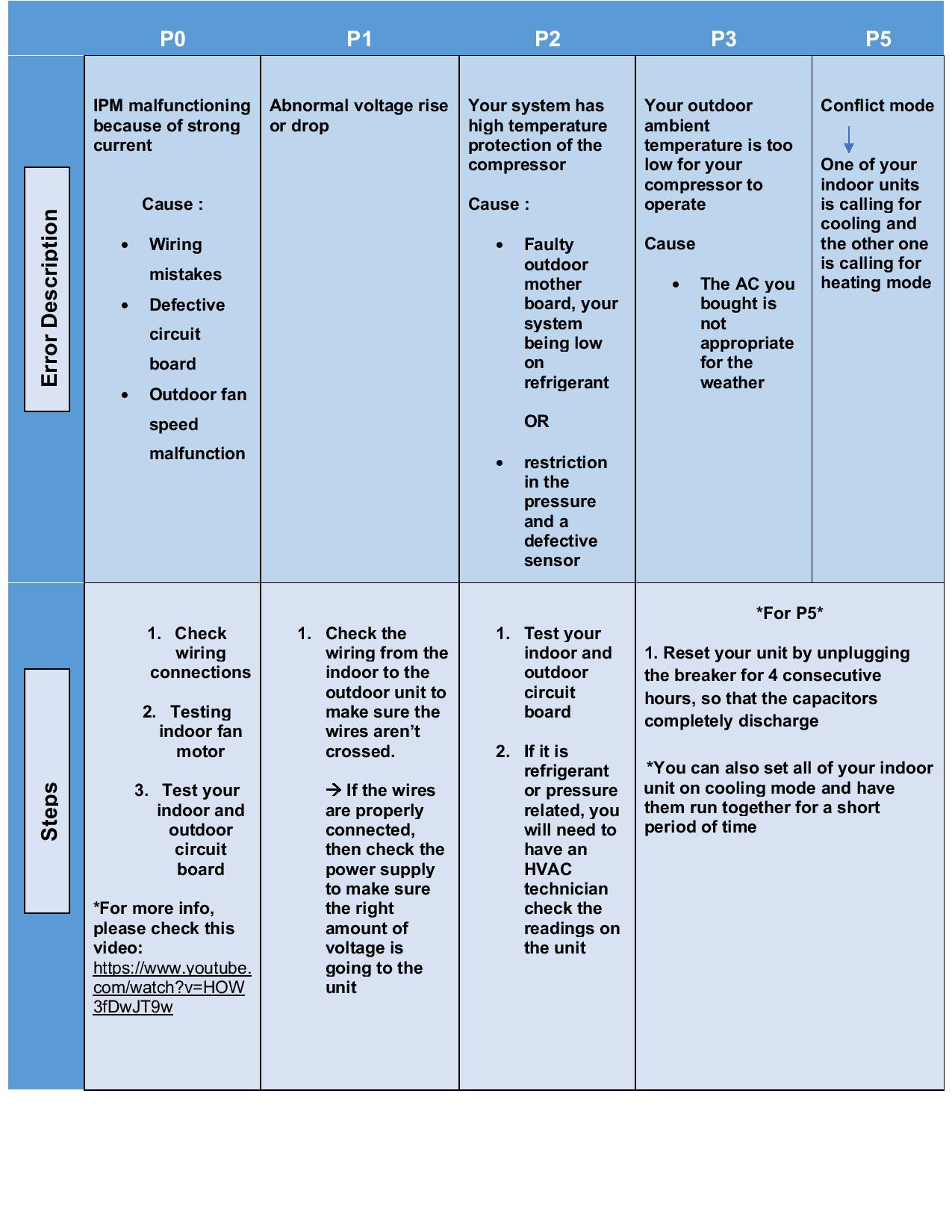
Credit: senville.com
Conclusion
Regular maintenance keeps your Senville mini split running efficiently. Troubleshooting common issues saves time and money. Check filters, wiring, and settings before calling a professional. Small problems, like dirty filters, are easy to fix yourself. For complex issues, consult the user manual or seek expert help.
Always ensure proper installation and follow the manufacturer’s guidelines. A well-maintained unit improves performance and extends its life. Stay proactive to avoid costly repairs. With simple care, your mini split will work smoothly for years. Keep your home comfortable and energy-efficient with these troubleshooting tips.

